
Wondering if HIIT is for You? Discover Why High-Intensity Interval Training is a Game-Changer!
High-Intensity Interval Training (HIIT) is one of the most effective workout methods for burning fat, improving cardiovascular fitness, and building lean muscle. By combining short bursts of intense effort with brief recovery periods, HIIT offers a powerful and time-efficient way to meet fitness goals. This blog post explores the science behind HIIT, its many benefits, and how to get started with this game-changing workout style.
What Makes HIIT So Effective?

HIIT stands out for its ability to maximize calorie burn and fitness benefits in a shorter time compared to traditional cardio. This type of training alternates between high-intensity intervals (where you exert close to your maximum effort) and rest or low-intensity recovery periods. Unlike traditional steady-state cardio, such as jogging or cycling at a moderate pace, HIIT pushes your body to its limits, triggering a high post-exercise oxygen consumption (EPOC) effect, also known as the “afterburn effect.”
- Research Evidence: Studies show that HIIT can burn up to 30% more calories than other forms of exercise of the same duration due to EPOC, where the body continues to consume oxygen and burn calories after the workout is finished.
- Comparison to Traditional Cardio: HIIT requires more energy in a shorter amount of time, allowing for shorter workouts and often yielding better fat loss results than steady-state cardio over time.
How HIIT Works: The Science Behind High-Intensity Intervals
HIIT is structured around quick bursts of intense activity, typically lasting between 20 to 60 seconds, followed by shorter rest or low-intensity recovery periods. This on-off structure challenges the body’s anaerobic and aerobic systems, leading to higher calorie burn during and after the workout.
- The Afterburn Effect (EPOC): During a HIIT workout, the body’s oxygen stores are quickly depleted, and replenishing them post-exercise requires increased energy. EPOC keeps your metabolism elevated, so you continue to burn calories for hours after finishing.
- Caloric Burn Efficiency: Studies from the Journal of Sports Science suggest that the afterburn from a 20-minute HIIT session can burn more calories over the course of a day than an hour of moderate cardio.
Benefits of HIIT Workouts
HIIT’s unique structure and intensity offer multiple fitness and health benefits. Here are some of the top reasons why HIIT is considered a game-changer for fitness:
- Increased Calorie Burn: HIIT’s intense intervals elevate heart rate and oxygen demand, which means more calories burned in less time.
- Research Insight: A HIIT session can burn between 25-30% more calories than a steady-state exercise of the same length, making it a powerful choice for weight loss.
- Improved Cardiovascular Health: HIIT challenges your heart and lungs, improving oxygen capacity and overall cardiovascular health.
- Heart Health: HIIT workouts have been shown to improve cardiovascular efficiency, lowering the risk of heart disease and hypertension.
- Time Efficiency: A key appeal of HIIT is that it requires less time than traditional workouts.
- Study Support: Research indicates that a 15-minute HIIT session can deliver the same benefits as a 30-45 minute moderate workout, making it ideal for busy schedules.
- Fat Loss Without Muscle Loss: HIIT workouts help in retaining lean muscle mass while promoting fat loss.
- Body Composition Benefits: HIIT workouts activate muscle fibers more effectively than cardio, supporting muscle retention while burning fat. This makes HIIT especially effective for those looking to lose weight without compromising muscle tone.
Beginner-Friendly HIIT Exercises
For beginners, starting with bodyweight HIIT exercises is ideal, as these moves are effective and easy to modify. As you progress, you can add equipment like dumbbells or kettlebells for added resistance.
- Bodyweight HIIT Moves:
- Burpees: Great for full-body conditioning and calorie burn.
- Mountain Climbers: Effective for core stability and cardio.
- Jump Squats: Builds leg strength while raising heart rate.
- Using Equipment:
- Kettlebell Swings: Targets the glutes, core, and shoulders.
- Dumbbell Thrusters: Combines a squat with an overhead press, ideal for full-body activation.
Structuring a HIIT Workout
Here are sample HIIT workout plans to suit different time frames, with suggested intervals and rest periods. Always start with a quick warm-up and end with a cooldown stretch.
- 10-Minute Workout: 20 seconds of work, 10 seconds of rest, 3 rounds.
- Exercises: Jump squats, mountain climbers, high knees.
- 20-Minute Workout: 30 seconds of work, 15 seconds of rest, 4 rounds.
- Exercises: Burpees, kettlebell swings, jump lunges, push-ups.
- 30-Minute Workout: 40 seconds of work, 20 seconds of rest, 5 rounds.
- Exercises: Dumbbell thrusters, plank jacks, box jumps, Russian twists.
How Often Should You Do HIIT?
The intensity of HIIT means that it doesn’t need to be done daily for effective results. Here’s how to schedule HIIT based on your fitness level:
- Beginners: Start with 1-2 sessions per week.
- Intermediate: Aim for 2-3 sessions weekly, with adequate rest.
- Advanced: 3-4 sessions per week, depending on recovery and other workout types.
Avoiding Overtraining: HIIT is intense and can lead to fatigue or burnout if overdone. Allow at least 24 hours between sessions to give your body time to recover.
Common Mistakes in HIIT Workouts

Even though HIIT is beginner-friendly, it’s easy to make mistakes, especially when intensity is high. Here are some tips to stay safe and get the most from your HIIT sessions:
- Prioritize Proper Form: Moving too quickly can compromise form, leading to injury. Take time to learn each move before increasing speed.
- Listen to Your Body: Push yourself, but know your limits. Overexerting can lead to burnout or injury, which may halt your progress.
Combining HIIT with Other Workouts
To avoid overworking the body, balancing HIIT with strength training and low-intensity cardio can help create a well-rounded fitness routine.
- Strength Training: Pairing HIIT with strength exercises can help build muscle, improve stability, and support metabolic health.
- Low-Intensity Cardio: Include walking or cycling on non-HIIT days to allow active recovery and support cardiovascular health without taxing the body too much.
Frequently Asked Questions
Q: How long should a HIIT workout last?
A: Most HIIT workouts range from 10 to 30 minutes. The duration depends on fitness level and goals, but even a 10-minute HIIT session can be effective.
Q: Can HIIT help with fat loss?
A: Yes! HIIT workouts are highly effective for fat burning due to the afterburn effect and high calorie burn during intense intervals. Studies show that HIIT can significantly reduce abdominal fat over time.
Q: When is the best time to do HIIT?
A: HIIT can be done anytime, but it’s best to schedule it when you have the most energy. Some people prefer mornings, while others perform best later in the day.
Conclusion
High-Intensity Interval Training (HIIT) is a powerful, efficient workout style that offers numerous health and fitness benefits. From increased calorie burn to cardiovascular health and time efficiency, HIIT can fit seamlessly into any lifestyle. Whether you’re a fitness newbie or an advanced athlete, incorporating HIIT can help you reach your goals faster. By understanding how to structure your workouts, avoiding common mistakes, and balancing HIIT with other activities, you’ll be well on your way to unlocking the full potential of this transformative training method.
